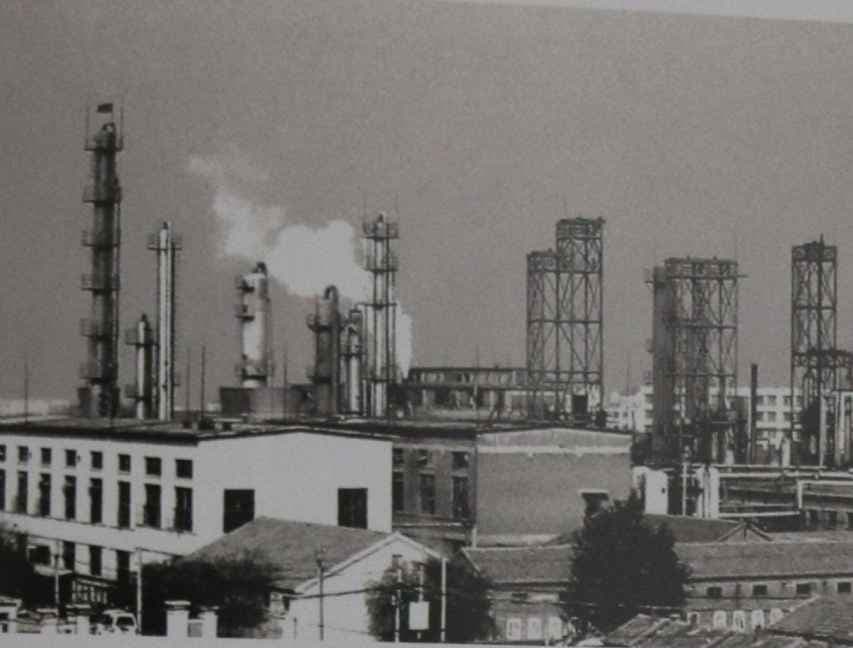Brief history, current situation and prospects of the development of fertilizer granulation technology

Fertilizer granulation technology 1926s:
- The granulation of chemical fertilizers can be traced back to 1926. At that time, someone in Chile melted Chilean saltpeter (natural sodium nitrate) at about 400°C and sprayed it into a tower. The molten droplets were immediately cooled by air and solidified into a nearly bead shape. Particles. This technology was later developed into a spray granulation process.
Fertilizer granulation technology 1930s:
- In the 1930s, the United States began to adopt the Oberphos process, which uses a rotating cylinder granulator-dryer to granulate ordinary calcium phosphate. In Europe, the Eirich process is often used, that is, the Eirich mixer is used. The mixer is a horizontal rotating disc with rotating paddles inside the disc, which can push the materials from the disc to the edge of the disc, control the amount of water or (and) steam added to perform the granulation operation, and then dry after granulation.
Fertilizer granulation technology 1950s:
- In the early 1950s, the Tennessee Valley Authority (TVA) in the United States obtained granular products during the process of developing a drum for continuous ammoniation of ordinary calcium phosphate, and officially launched the drum granulator in 1953. Since then, drum granulation technology has been gradually promoted. In 1964, 90% of granular fertilizers in the United States were produced using TVA drums.
Fertilizer granulation technology 1960s:
- In the early 1960s, the Scottish Agricultural Industry Company successfully developed a double-drum granulator with internal circulation. It integrates ammoniation, granulation, material return and drying into one piece of equipment.

Fertilizer granulation technology Early 1960s:
- In the early 1960s, the National Fertilizer Development Center (NFDC) of the United States successfully studied the pre-neutralization-drum ammoniation granulation method to produce diammonium phosphate. The American International Mining Chemicals Company (I.M.C.) immediately used this method to build an industrial production unit, which was completed and put into operation in November 1961. By 1977, 80% of the ammonium phosphate output in the United States was produced using this method.
Fertilizer granulation technology Mid 1960s:
- Since the mid-1960s, the U.S. National Fertilizer Development Center and Spanish companies such as Cros have developed a number of pipeline reactors for the production of ammonium phosphate fertilizers. In the mid-1970s, they were further improved into cross-tube reactors. Later, various countries widely used it to replace pre-neutralizers to produce various granular compound fertilizers.
Fertilizer granulation technology Late 1960s:
- Fluidized bed granulation technology was developed in the late 1960s. Later, the spray bed granulation method was developed. In July 1983, TVA of the United States built a final granulation method demonstration device with a daily output of 330 tons at the National Fertilizer Development Center.
Fertilizer granulation technology early 1970s:
- Since the early 1970s, various countries have been using various granulation technologies together. For example, there is a device in Alabama in the United States that uses a pipeline reactor-biaxial granulator process to produce granular ammonium polyphosphate. The former Soviet Union produced granular ammonium phosphate and potassium ammonium phosphate using a spray drying-rolling granulation process, and also used a spray-fluidized bed drying and granulation process to produce granular ammonium phosphate.
Fertilizer granulation technology late 1970s:
- The Spanish Cros Company has used a granulation system consisting of a pipeline reactor, a disc granulator and a drum ammoniation-granulator. The French company Kaltenbach-Thuring SA uses fluidized drum granulation to increase the particle size of powdery urea or ammonium nitrate, and can also be used to make the appearance of decompressed and granulated products round.
Conlusion:
At present, the annual consumption of chemical fertilizers in the world is about 360 million tons, of which the consumption of granular NPK fertilizers is 60 million tons, and the consumption of NP granular fertilizers (such as DAP and MAP) is 25 million tons. It is expected that the production and use of granular NPK and NP fertilizers will grow moderately in the future, especially in developing countries. If coupled with granular single fertilizers, the consumption of granular fertilizers is estimated to exceed more than half of the world’s annual consumption of chemical fertilizers. In order to produce granular fertilizers with good quality and low cost, countries are still constantly researching and developing new granulation technologies.
The development of new technology for compound fertilizer granulation focuses on the following aspects:

Multifunctional granulation equipment
- The purpose of multifunctional granulation equipment is to simplify the process, reduce equipment, save investment, and reduce production costs. For example, guided spray fluidized granulation technology can produce granular ammonium phosphate without returning materials. The granulation device has four functions: granulation, drying, classification and cooling.
- In early 1989, two 10-day continuous operation experiments were carried out using the 1000t/a pilot test device of a fertilizer plant using this technology. The test results show that the equipment operates normally and the quality of the product granular ammonium phosphate meets the requirements.
- Another example is the fully internal return spray granulation dryer that has been used in the production of 30,000 t/a and 60,000 t/a ammonium phosphate plants. This machine concentrates the granulation, drying, screening, crushing and material return in the process of producing ammonium phosphate by slurry method. The production operation assessment shows that all performance indicators of this machine meet the design requirements.
Save granulation energy consumption
- In order to reduce energy consumption, various granulation technologies generally try to make full use of the reaction heat of chemical raw materials, and strive to reduce the amount of returned materials and adopt a drying-free process as much as possible, but the effects vary. Take the final granulation method of TVA in the United States as an example. It is said that the energy consumption of using this method to produce granular urea is only 26% of the average energy consumption of general industrial granulation methods.
Granulated products have uniform particle size
- In 1976, the U.S. TVA and the U.S. Plant Food Control Agency conducted a joint investigation. The investigation results showed that 58.5% of all compound fertilizers and 40.1% of all fertilizers sold in the United States were bulk blended fertilizers.
- This is due to the fact that bulk blended fertilizers are different from ready-made sizes available on the market. Usually it is a prescription configuration designed based on local soil analysis results, crop types, expected harvests, etc., so it has a good yield-increasing effect and is generally welcomed by farmers.
- Granular fertilizers used to produce bulk blended fertilizers must have low moisture content, high strength, and no caking during storage. They must also have uniform particle sizes to avoid segregation during loading, unloading, transportation, stacking, and spreading, resulting in fertilizer components Uneven, the expected yield increase effect cannot be achieved after application.
- The research results of TVA in the United States in the early 1980s pointed out that if the particle size of the material is in the range of -3.327+0.991mm (-6+16 mesh), and the amount of +2.362mm (+8 mesh) of each material is between 25% and 45% If the particle size difference between the intermediate materials of different ingredients is less than 10%, the mixture will not segregate.
- According to reports, the granular urea produced by TVA using the drop-curtain granulation method not only has round particles and good strength, but also 90% of the particle size of the product is within the range of -2.794+1.981mm (-7+9 mesh). Since the product particle size is uniform, segregation will not occur when stacked in a cone shape.
- In recent years, TVA has also made certain progress in producing granular MAP and DAP using the falling granulation method. In addition, the process of producing the same type of potash fertilizer products is also being studied. It is estimated that in the near future, a variety of granular fertilizer raw material production processes will be developed with uniform finished product strength. In this way, conditions can be created for mass production of high-quality bulk blended fertilizers, so that the produced bulk blended fertilizers will not segregate during loading, unloading, transportation, and storage, thus ensuring product quality.
Artificial Intellegence AI simulation system for granulation process
Although granulation production systems are generally equipped with necessary instruments and automatic control systems for the production process, in practice they still often rely on the operator’s operating experience and subjective judgment for production operations, making it difficult to ensure long-term, stable and optimized operations. .
- According to reports, the Sedisfer expert system developed for the NPK-DAP granular fertilizer unit under the Venezuelan Petrochemical Company is summarized into three main models around the three most important operating factors:
- Production Model – Problems with reduced output due to excessive return of coarse material (over-granulation) or fines;
- Quality Model – Particle Size Distribution and Chemistry Issues (Dosing Issues)
- Environmental Impact Model – Produces substandard environmental conditions (emissions of dust, ammonia, etc.).
- The Sedisfer 1.0 system was first developed for production models. Currently, the system can solve the following problems:
- A simple way to identify the most common causes of yield loss in the 12-24-12 variety due to excessive graining;
- State the above reasons and demonstrate them;
- Make recommendations for corrective action.
It is foreseeable that with the gradual establishment of auxiliary expert systems for granulation engineering, production operations can be judged quickly, effectively and coordinatedly, so that the granulation device can obtain higher production capacity and high-quality products.

